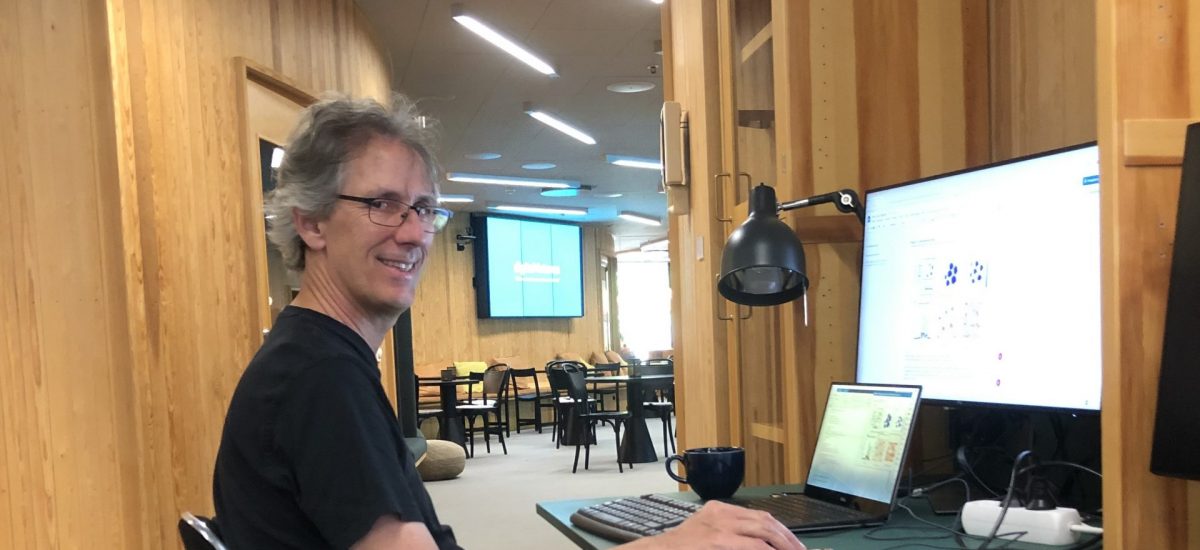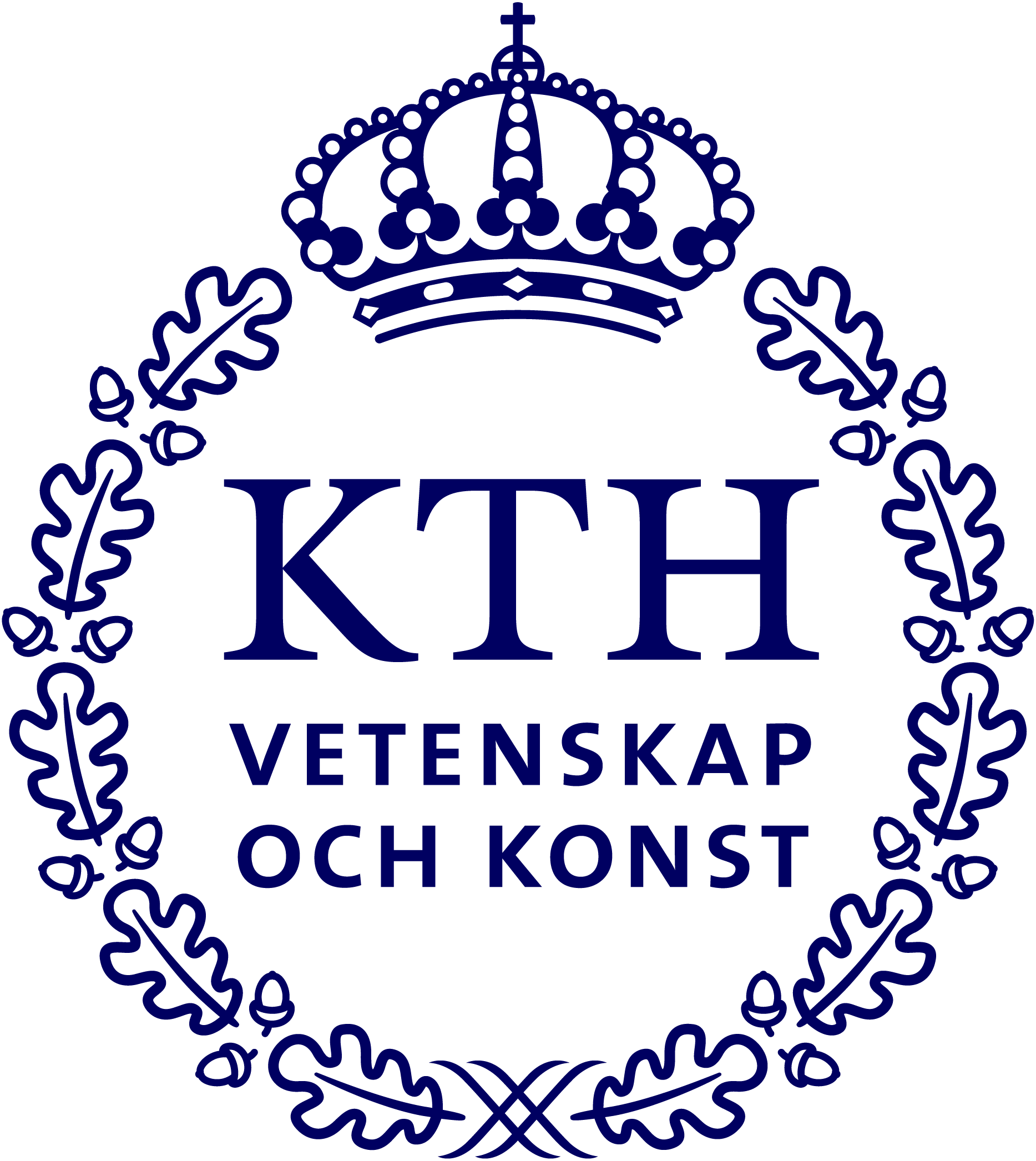
Meet neuroscientist Ulrich Egert – Digital Futures Scholar in residence
Ulrich Egert is a neuroscientist by training and currently a Full Professor for Biomicrotechnology at the Dept. of Microsystems Engineering, Faculty of Engineering, University of Freiburg, Germany. He is a director of the Bernstein Center Freiburg, Freiburg’s inter-faculty Centre for Computational Neuroscience, and a founding member of the BrainLinks-BrainTools Excellence Clusters on neurotechnology. Since May, he has been visiting Digital Futures as a Scholar in residence.
Hi Ulrich, in the last couple of months, you have visited Digital Futures as a Scholar-in-residence. What made you take on this opportunity?
– We wanted to finish a manuscript that resulted from a longer collaboration with my host, Arvind Kumar. Since this doesn’t work so well with videoconferencing only, I decided to spend a sabbatical at KTH. Arvind pointed out that our project would fit the concept of Digital Futures, particularly as I am looking for further collaborators who might be interested in our work.
You’re interested in the impact of the self-organisation of networks beyond neuroscience. Why do you find this so fascinating?
– Neuronal networks in our brains need to organise the fine detail of their interaction based on local conditions and the activity they receive from the outside. So it’s a loop where neurons adapt homeostatically to the network they form themselves and to external conditions. These complex and beautiful networks arise while the individual neuron knows nothing about their structure or any “grand plan”. All they see is their input and their molecular environment. A coworker of mine, Samora Okujeni, built the original model to help us understand how neuronal networks of different properties might arise as we see them in a dish. At some point, we found that our model was not exclusively neuronal except for its original application. If we were to expand the configuration parameters beyond what is plausible for neurons, it might fit many other types of networks created by autonomous agents, for example social or economic networks and others. When Arvind and I explored this, we found a very rich set of characteristics of real-world networks and an opportunity to explore a wide range of features.
We often would do some data analysis, thinking we understood these networks well, only to find another emerging property that we didn’t expect. Even though this is a significantly reduced model, it has become quite difficult for us not to think of it as some social interaction – there are many similarities. The model allows us to explore how networks form under varying external conditions, input from outside, or if composed of agents with different properties. There are quite a few fields of application, also in engineering. I think we only scratched the surface thus far. Mind you, such a model could be very wrong compared to reality, but it highlights points of interest.
What have you encountered in your analysis of neuronal and myocardial networks and the technology required to monitor such networks?
– That isn’t easy to answer. I cannot say what I have “come across”. In my career, I touched on several fields of research and technology. I’ve always been interested in how neuronal networks work on a small scale. There has always been some application perspective, but we do fundamental research. The early work on myocardial networks started as a side project using our – at the time – newly developed electrode arrays. For neuroscientists, these are comparatively simple networks but challenging to measure and analyse because the cells contract.
Trying to optimise the interface between a measurement electrode, material, surfaces and cells led to work on neurotechnical interfaces and eventually a position as a neuroscientist at the Faculty of Engineering. We studied how to interact with neurons on a small scale and how this interaction would propagate into neuronal networks. After all, the famous ‘brain-computer interface’, if it uses implanted electrodes, is, first of all, a microscopic interface between some material and neurons. The fancy technology comes only after that. In collaboration with my colleague Prof. Carola Haas at the University Clinic Freiburg, quite some work went into epilepsy research in a mouse model, again looking at network activity.
We also studied how to achieve reproducible responses from neuronal networks using machine learning and systems control tools in the intact brain and a dish. The result could be helpful to intervene with epileptic activity or in the context of deep brain stimulation for Parkinson’s Disease. Surprisingly, it was a much more significant challenge for machine learning than expected. Nothing ever stays the same in a living neuronal network, making such a control task difficult. I enjoy these very different interdisciplinary perspectives my field of work includes.
Finally, how was your summer holiday?
– Summer in Stockholm was excellent, and I feel lucky to have escaped the 30+ degrees in southern Germany. I find Stockholm and Sweden, or the Swedish, very welcoming and helpful. Thank you, everyone. Besides working, I’ve been to northern Sweden for a short trip, too short as it turned out (the only time here that there was no sun). I love the Archipelago – any summer houses to spare, anyone? In July, my son and his girlfriend visited me, and we enjoyed exploring the area. I wish I could copy/paste the weather and the sea to Freiburg!
Your scholarship ends on 31 September – what has your experience been like so far, and what will you do next?
– The scholarship was and still is an excellent opportunity to get in touch with new people and ideas – with August being a major break. I hope to reboot these contacts while I’m here. Digital Futures provides an excellent environment, and I felt very welcome. You are doing a great job there. As for our research, we’ll expand the project and write a grant application. The next stop after Stockholm, however, is the big German conference on Computational Neuroscience in Berlin, and then home to unpack many boxes in my new apartment.


